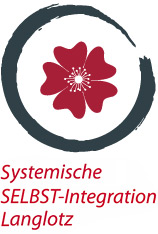Questionnaire for Self-Diagnosis
Autonomy-Questionnaire PDF Download >>
for free.
Instructions for Completion and Evaluation of the Questionnaire
Instructions: For each statement either mark
0= does not apply; 1= rarely; 2= sometimes; 3= frequently;
4= almost always.
Then add up your total score for each section. (A – F)
Destructive Symbiosis
The limited ability to set boundaries, leads to the following dilemma: When being near to the other person, the person concerned pays more attention and uses more energy for the other person than for themselves. If they want to be more in touch with themselves, they have to withdraw from the other person and keep at a distance. In order to be close to the other and to oneself at the same time, one needs a boundary, an inner distance.
Autonomy Aspects
The autonomous abilities, to distance oneself from other people’s thoughts and feelings (A) and to remain connected with one’s own thoughts and feelings (B) are limited. “Healthy” aggression (C) is vital for demarcation, self-protection, for tackling problems and coping with difficult situations, e.g. conflicts.
Symbiotic relationships are therefore characterized by a tendency towards dependency and co-dependency as well as a lack of ability to deal with each other and resolve conflicts.
Evaluation A – C: The values that you determined basically show you whether you are very or not very autonomous:
1-10 = lower, 11-20 = medium, 21 – 32 = higher autonomy index.
Symbiosis Aspects
The suppression of the autonomy aspects leads to the following issues, which can be understood either as compensation for the limited autonomous abilities, or as a breakthrough (de-compensation) of the suppressed autonomous impulses:
D “Over-Demarcation”: In order not to get hurt again, “sensitive people” keep their distance from other people. They suppress their compassion so that they can stay more closely with themselves. However at the cost of having to manage without being close to others although they desperately yearn for exactly that. They give up, become bitter and angry.
E “Dominance”, “Aggression”: Detached from one’s own Self, which “feels worthy regardless of whether it achieves anything or not”, “sensitive people” feel as if they are responsible in strange places and make themselves useful in order to get recognition and appreciation. Or so that they don’t have to do without closeness and pseudo- harmony without becoming dependent, “energetic people” turn the tables and try, partially unconsciously, with more or less discreet or even massive manipulation – “charisma”, promises, blackmail, threats – to adapt the others, their perceptions and feelings and their contacts to their own needs, in order to make the others dependent on themselves. Both variants have problems with setting boundaries (“contrary-delimitation”). Sensitive people feel insulted, while the energetic ones find their counterparts presumptuous, as if they were entitled to it.
F “Destructive Behavior (dissociation of aggressive impulses) “Dominant (overgrip) Behavioragainst oneself or directed outward toward others”: Suppressed aggressive impulses accumulate and “seek other destructive channels”. This energy is directed against themselves: depressive paralysis, feelings of guilt, self-depreciation, self-hate, self-destruction or on a physical level as stress and psychosomatic illnesses. Otherwise it is directed outwards toward others, in the form of mental and physical violence.
Scoring D-F: (Compensatory Symbiosis Aspects):
1-10 = lower; 11-20 = medium; 21 – 32 = higher symbiosis index:
Enter your results into the autonomy diagram. Changes after therapy can be determined and inserted into the diagram using a different color. In this way, the autonomy- state and its changes can be seen “at a glance”.
